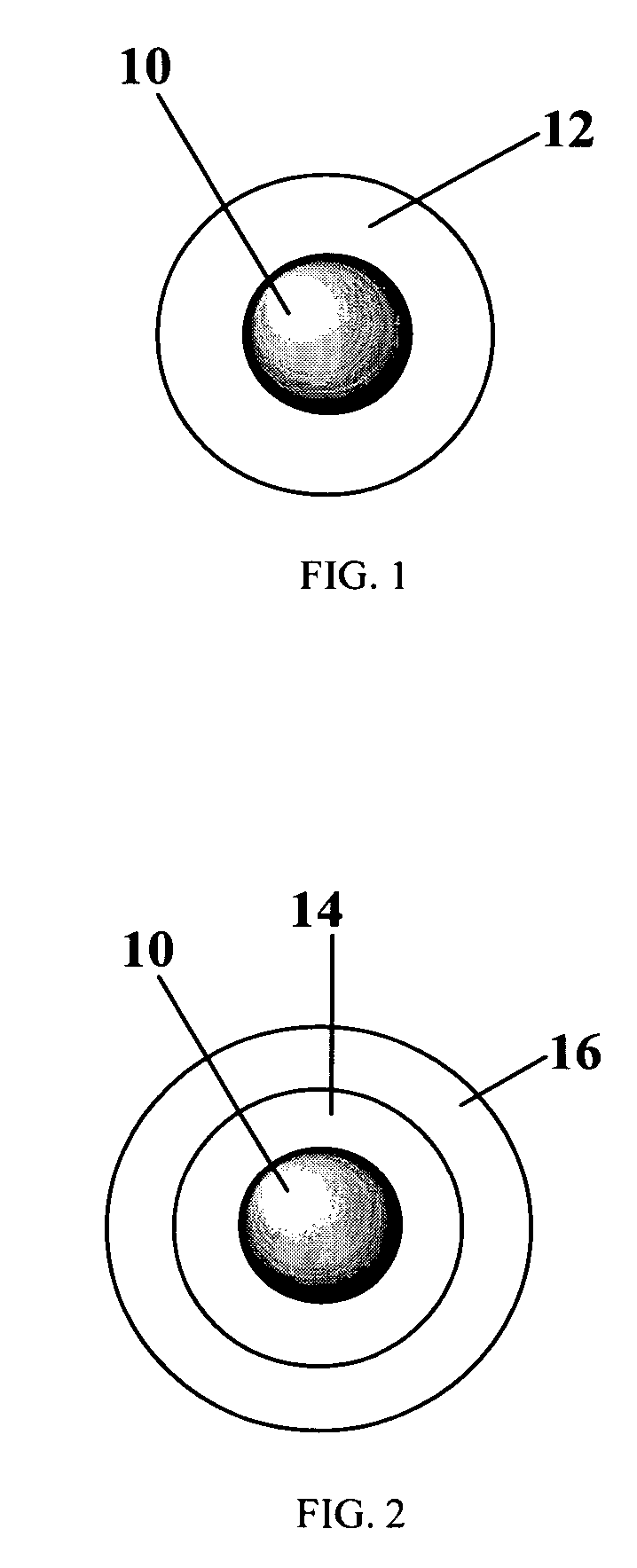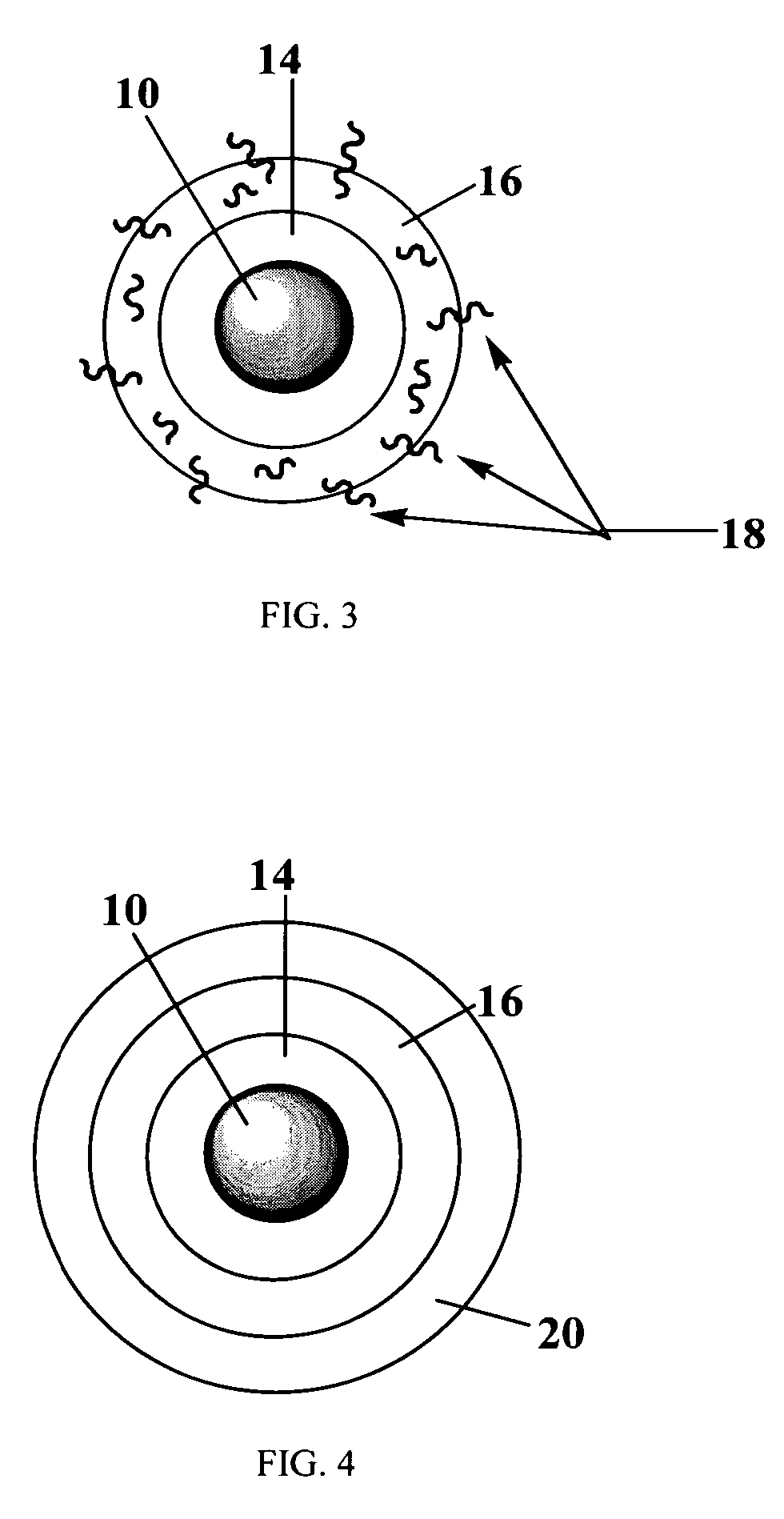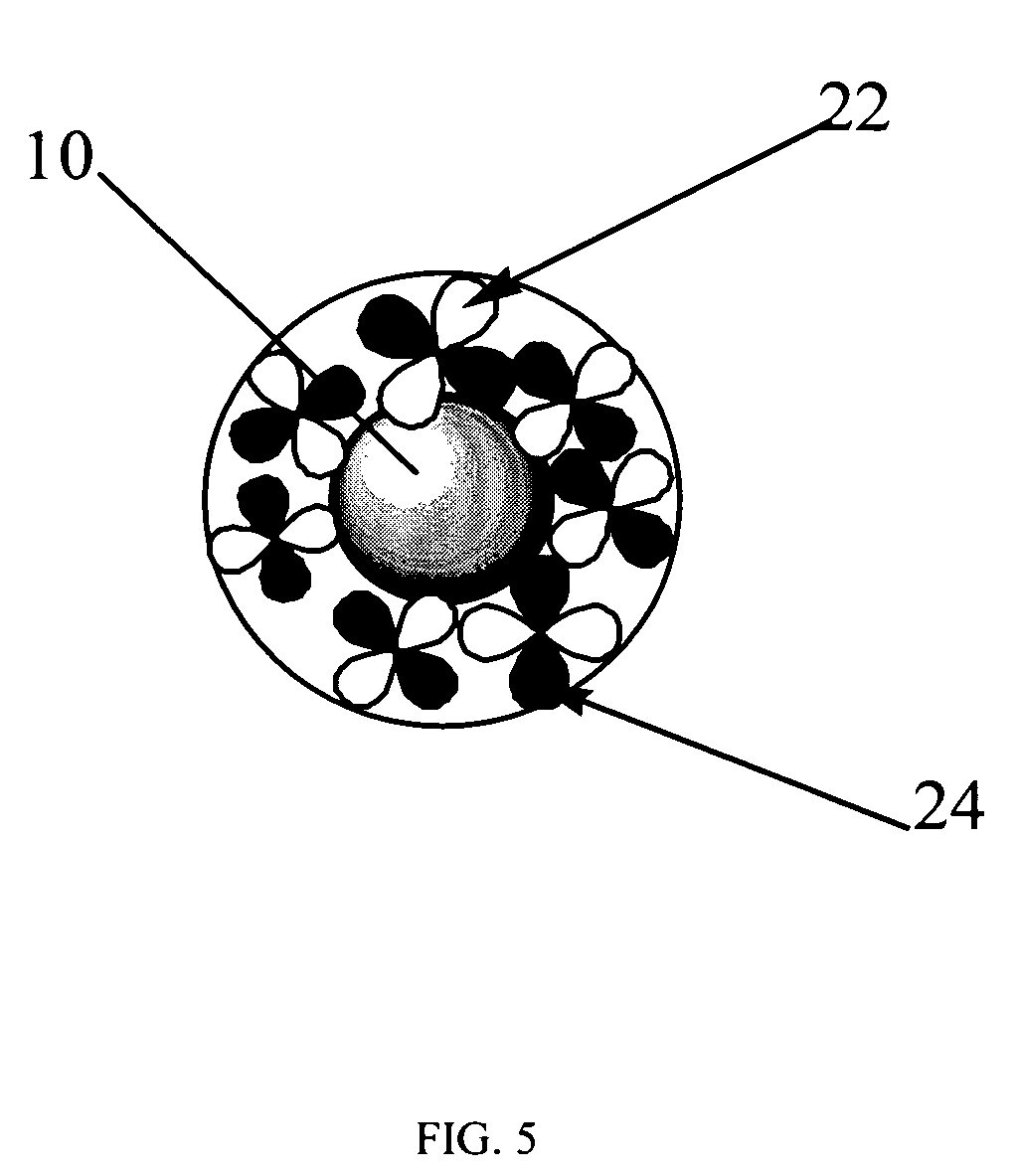Control of particulate flowback in subterranean formations using elastomeric resin coated proppants
- Summary
- Abstract
- Description
- Claims
- Application Information
AI Technical Summary
Benefits of technology
Problems solved by technology
Method used
Image
Examples
example 1
Preparation of Proppant with Elastomeric Coating
[0109] Thirty grams of washed Ottawa sand having a range of 20-40 mesh was heated in an electric forced air oven at a temperature of 520° F. The heated sand was placed in a stainless steel five gallon HOBAR™ mixer (Hobart Corp., Troy, Ohio) equipped with a stainless steel paddle mixing blade. ENGAGE™ 7467 elastomer (Dupont, Wellington, Del.), 0.6 grams, was added to the hot sand and mixed at medium speed for 30 seconds. After this time, a HEXA / water solution consisting of 6 grams of HEXA (hexamethylenetetramine) and 100 mL of water was added to the elastomer-sand mixture. The elastomer-sand-hexa-water mixture was mixed for an additional 15-20 seconds. The process was considered complete when the sand became free flowing in the mixer. The coated sand was discharged from the mixing bowl and allowed to cool before testing.
example 2
Preparation of Proppant with Elastomeric and Resin Coating
[0110] Thirty pounds of washed Ottawa sand having a range of 20-40 mesh was heated in an electric forced air oven at a temperature of 550° F. The heated sand was placed in a stainless steel five gallon Hobart mixer equipped with a stainless steel paddle mixing blade. 0.6 Pounds of PLENCO™ 12727 phenolic resin (Plastics Engineering Co., Sheboygan, Wis.) was added to the hot sand and mixed at medium speed for 30 seconds. After this time, a hexa / water solution consisting of 0.2 pounds of HEXA (hexamethylenetetramine) and 100 mL of water was added to the resin-sand mixture. The resin-sand-hexa-water mixture was mixed for an additional 15-20 seconds. After this time, 0.3 pounds of ENGAGE™ 7467, an elastomer (Dupont, Wellington, Del.) was added to the resin-sand mixture in the mixer. An additional mix time of 200-230 seconds was allowed to let the elastomer bond on the outside of the resin coated sand. The process was considered c...
example 3
Preparation of Proppant with Mixture of Elastomer and Resin Coating
[0111] Thirty pounds of washed Ottawa sand having a range of 20-40 mesh was heated in an electric forced air oven at a temperature of 550° F. The heated sand was placed in a stainless steel five gallon HOBAR™ mixer equipped with a stainless steel paddle mixing blade. A mixture of phenolic resin and elastomer was formed separately by blending 15% VERSAFLEX™ CL-2000X elastomer (GLS Corporation, Arlington Heights, Ill.) with PLENCO™ 12727 phenolic resin (Plastics Engineering Co., Sheboygan, Wis.). 0.6 Pounds of the phenolic resin-elastomer mixture was added to the hot sand and mixed at medium speed for 30 seconds. After this time, a hexa / water solution consisting of 0.18 pounds of HEXA (hexamethylenetetramine) and 200 mL of water was added to the resin-sand mixture. The resin-elastomer-sand-hexa-water mixture was mixed for an additional 15-20 seconds. The process was considered complete when the sand became free flowin...
PUM
| Property | Measurement | Unit |
|---|---|---|
| Density | aaaaa | aaaaa |
| Density | aaaaa | aaaaa |
| Tensile strength | aaaaa | aaaaa |
Abstract
Description
Claims
Application Information
 Login to View More
Login to View More - R&D
- Intellectual Property
- Life Sciences
- Materials
- Tech Scout
- Unparalleled Data Quality
- Higher Quality Content
- 60% Fewer Hallucinations
Browse by: Latest US Patents, China's latest patents, Technical Efficacy Thesaurus, Application Domain, Technology Topic, Popular Technical Reports.
© 2025 PatSnap. All rights reserved.Legal|Privacy policy|Modern Slavery Act Transparency Statement|Sitemap|About US| Contact US: help@patsnap.com



